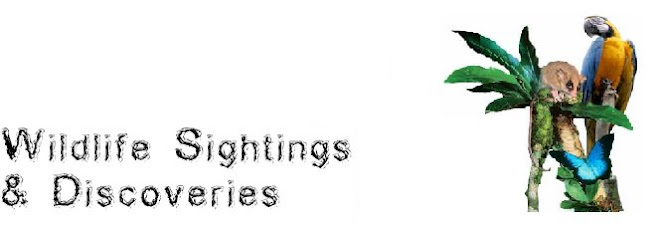
European and Peruvian herpetologists have discovered the smallest frog yet known from the Andes, and one of the smallest amphibians known anywhere in the world, in the highlands of Manu National Park near Cusco in south-eastern Peru.
Very unusual to be so small at high altitude
It is among the smallest vertebrates ever found above 3000 m (9840 feet), where most species tend to be larger than congeneric or similar species inhabiting lowland areas.
Females only lay 2 eggs - Hatch as froglets, not tadpoles
Because of its minute size, the new species has been named Noblella pygmaea, or Noble's Pygmy Frog. Females measure less than half an inch (12.5 mm) in snout-vent length, whereas males are just a bit longer than 1 cm.
Despite their relatively larger size compared to males, females lay only two eggs. In contrast to most amphibian species, these eggs are laid in moist, terrestrial microhabitats, such as under mosses or the leaf litter, and embryos do not develop into aquatic tadpoles. Instead, minute froglets hatch from the eggs to lead a fully terrestrial life. The mother remain near the eggs to protect them from insect predators and dessication. Fully hydrated eggs, measuring approximately 4 mm in diameter, are about two-thirds of the size of their mother.
Cloud forest and montane scrub habitat
The new species inhabit the cloud forest, the montane scrub and the high-elevation grasslands of Manu National Park and of the privately-owned Wayqecha Research Station in the upper Kcosñipata valley, named after a river which is a tributary to the Madre de Dios River in the Amazon basin. Their altitude range seems to be restricted between 3000 and 3200 metres (9840-10500 feet).
Manu National Park
Manu National Park is well known for the exuberance and spectacular diversity of its lowland rainforests; however the Park also preserves vast areas of montane cloud forests, where the ever-present mists envelop and often hide a large number of plants and animals highly adapted to live in a cold and permanently humid environment.
The Wayqecha Research Station protects nearly 600 ha of a mosaic of cloud forest, scrub and grassland habitats, and hosts a growing number of scientists studying the biological diversity and the effects of global climate change on these delicate ecosystems.
10 frogs recently discovered
The Noble's Pygmy Frog is one among over 10 new frog species discovered over the past 2 years in the cloud forests of Cusco. The high level of endemism in amphibians living along the eastern slopes of the Andes explains the biological richness of the region, where researchers expect to find many more new species in poorly explored areas.
Lack of protection & deadly fungus
Despite living in a National Park and a private conservation area, Noble's Pygmy Frogs are not protected from many forces threatening Andean amphibians, such as habitat modification, deforestation, over-grazing by introduced livestock, the effects of global warming and the recent arrival of the highly virulent pathogenic fungus Batrachochytrium dendrobatidis. This fungus is the suspected cause of extinction for many frog species in Ecuador and northern Peru, and is currently decimating populations of high-elevation frogs in southern Peru.
Unfortunately there are no ways of stopping the wave of fungal infections in the region, but researchers hope that the large topographic heterogeneity of the Andean cordilleras will provide refugia where the fungus is unable to infect and cause massive population declines in amphibians.
German herpetologist Edgar Lehr from the Senckenberg Natural History Collections in Dresden and Swiss-Peruvian ecologist Alessandro Catenazzi from the University of California at Berkeley, USA are describing the new species in a paper to be published in the forthcoming issue of the journal Copeia. The new species was discovered during field work supported by the administration of Manu National Park, the Peruvian NGO Amazon Conservation Association, the UK-based Rufford Small Grants Foundation, the Chicago Board of Trade Endangered Species Fund and the IUCN Amphibian Specialist Group. Personnel from towns and native communities adjacent to Manu National Park assisted researches in the field and contributed to the discovery of Noble's Pygmy Frog.












.jpg)